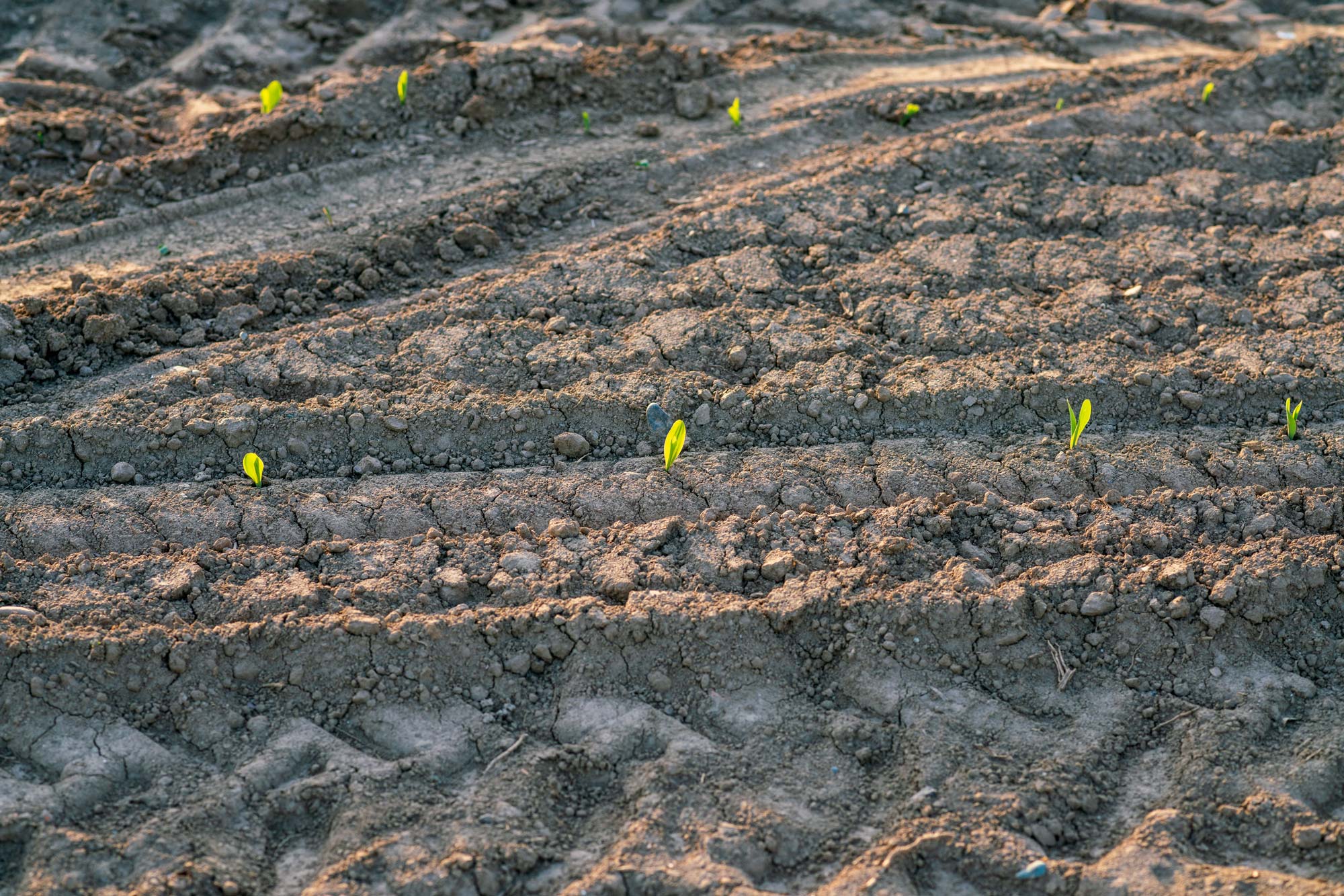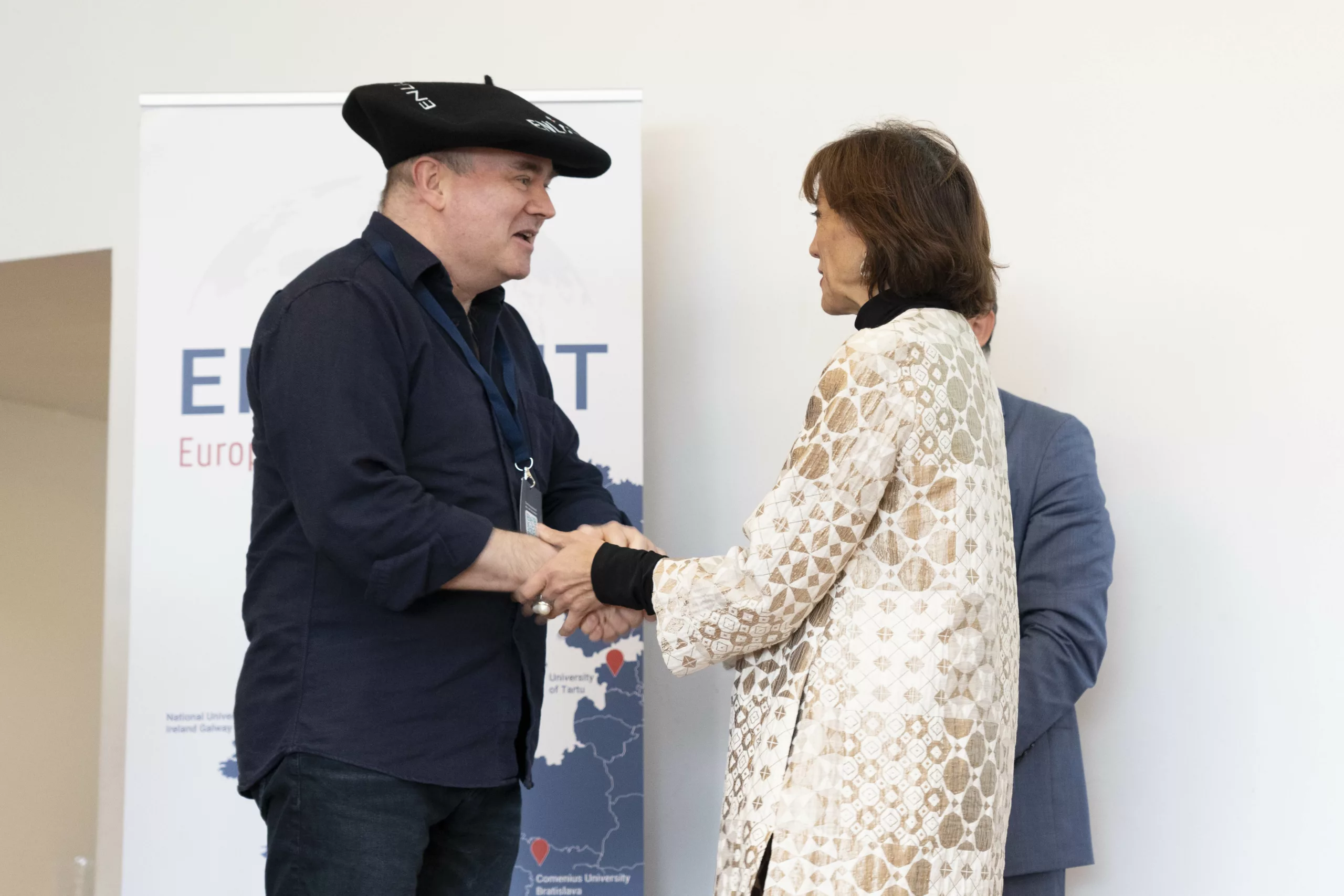
While the systemic effects of climate change continue to reverberate across the globe, some of us are more temporarily sheltered than others. For this reason, it can be difficult for those most at risk to communicate the magnitude and urgency of the issue, particularly in the developing world. For us to really understand and communicate the patterns through which climate stress impacts agricultural production – reliable data is vital.
TAPAS: The Earth’s Cardiologist
In April 2023, I received the ENLIGHT Impact Award in Climate Change on behalf of the TAPAS project. In this project, Prof Charles Spillane and I are using neural networks to understand the growth cycles of natural and farmed vegetation as observed from space. If you could look at Africa from low earth orbit using optical filters sensitive to light reflected from the plant ecosystems below, you can clearly see a year in the life of the continent. In this animation these patterns in biomass vitality have the appearance of a beautiful beating heart in time with the seasons. And in the top right-hand corner, a small area is beating at double the rate; this is an artificial growth pattern associated with the Nile Delta, whose local conditions guarantee two harvest seasons per annum.
Every one of the millions of pixels on this map – the smallest point resolvable from space using earth observation satellites, only metres in size – has its own biomass pattern that waxes and wanes over time, with the impact of climate change affecting each individually. With TAPAS we are using AI to sift through and identify the signals across an entire continent that identify those places suffering the most, those coping the best, and those for whom immediate intervention is a priority. Our goal is the development of a Biomass Adaptation Index (BAI) – which measures the vitality of a region’s biomass resilience to climate change.
We are looking at an area called the Sahel, where the Sahara meets the lower part of this beating heart in northern Africa. There are approximately 100 million people living here many of whom depend on subsistence agriculture. Our AI models measure those biomass ‘heartbeats’ visible from space in individual farms, and interpret patterns in the same way that a cardiologist might interpret heartbeats, to identify which areas are stable and which are in need of intervention.
Archived and real-time earth observation data show us which biomass growth patterns are consistent with a climate adaptation/stress response. By anchoring BAI values to net crop production data, we can identify and understand where climate change is affecting agri-food production, and put a cost on those effects through loss of crop yield and so, lost income. This is a complicated process that to fully understand and involves a range of expertise – from computer science to agronomy. But by studying patterns over many years, a clear image of the long-term socioeconomic impact of climate change begins to emerge.
Stakeholder involvement is absolutely critical to guide the development of our AI algorithms. For example, our colleagues in Self Help Africa offer essential insights from their teams working on the ground in places like Senegal and Mali, who are literally just one step away from those experiencing the nightmarish effects of climate change every day. And our partnership helps us to maintain our focus on creating impact for these vulnerable communities. At a larger scale, TAPAS can also contribute towards a more rigorous cost-benefit assessment of planned regional interventions for NGO’s and donor organisations ranging from CGIAR, USAID, Irish Aid to the World Bank.
“Everything Clicked”
In 2011, I went to New York to train as a Professor of Genetics at the Albert Einstein College of Medicine. Here I brought my experience of advanced computing, data analytics and what was rapidly becoming the respectable area of AI based on neural networks to various collaborations on the medical school campus. On my return to the University of Galway in 2016, I had a chance encounter with an old colleague who was on route to give a seminar on earth observation remote sensing to students on the M.Sc. in Agri-food Sustainability & Technology. Curious and having some free time, I sat in on Dr Conor Delaney’s talk. Everything clicked.
While in the United States, I had been invited by NASA’s Planetary Sciences Division to review instrumentation proposals. Throughout this experience, I learned how to go about building and sending a spacecraft with specialised cameras to remotely sense other planets, asteroids and comets. 10 minutes into Conor’s presentation, I realised that I could apply the same ‘planetary science’ paradigm that I learned working with NASA to our own planet – even more so when I discovered that there was literally a small armada of earth observation satellites constantly in orbit, providing free access to their data.
Calculating the Cost
Sometimes unconventional paths can produce the most innovative solutions, and a collaborative environment like University of Galway allows space for precisely these synergies. On my return to Galway in 2016 I started to talking to people – geophysicists, zoologists, marine biologists, limnologists – all of whom had problems that could be solved using earth observation. Working separately with colleagues in Earth and Ocean Sciences (Dr Eve Daly) and in Zoology (Dr Anne Marie Power) along with collaborators in Dundalk Institute of Technology and the University of Birmingham, Alabama, funding was secured (1) to study the water quality of Irish freshwater lakes, to monitor changes groundwater across the island, and for the first time monitor Ireland’s abundant coastal kelp forests; all of these projects involved the use of observations obtained from space. All share the same fundamental problem – to sift through vast banks of image data to identify patterns linked with the properties on the Earth’s surface (and subsurface). And everything has come full circle with the TAPAS project, winner of the 2021 SFI Innovator Prize (AI for the Societal Good Challenge).
While we know that the cost of climate stress is monumental, calculating that cost and attempting to build resilience, is no simple task. Our innovative technology identifies not only the cost of climate stress to agri-food production, but also the regions most in need of intervention. For example, we have been studying USAID’s $150M irrigation intervention between 2010-2015 in the Senegal River Valley, an area critical to rice production in Western Africa, whose impact would have been to stabilise water availability, limit encroaching salinity from the Atlantic, and manage impulsive local climate events such as droughts and flash flooding. The standard post-intervention audit report using conventional socioeconomic metrics suggested an overall underperformance.
Using the TAPAS platform, we have been able to identify where within the almost 5000 km2 area the intervention work has been successful and critically monetise it’s impact – and similarly estimate the loss of productivity and its estimated cost in specific areas over time. This granularity in being able to map the response of such a large and diverse cultivated area to interventions of this type is a unique aspect of the TAPAS platform. As we have been developing TAPAS, we have engaged with programmes such as the CGIAR Initiative on Climate Resilience and CGIAR Initiative on Low Emissions Food Systems, to explore further ways of expanding our knowledge base to other agricultural risks.
Over the next 30 years, food supply and security will face severe threats if little action is taken to address climate change. Parts of Southern Europe and North Africa will bear the brunt in failing harvests, higher prices and malnutrition. (2) Equipped with the data and perspective offered by TAPAS, we can begin to take those steps towards a resilient food system.
Learn more about TAPAS here.
The TAPAS team is led by Dr Aaron Golden (University of Galway), Dr Charles Spillane (University of Galway), and Dr Ana Loboguerro (International Center for Tropical Agriculture).
Profiles

Dr Aaron Golden is an astronomer and interdisciplinary scientist with over 25 years of computational experience applied to data-driven projects in genomics, earth observation and radiomics.
Minor planet 11451 was named 'Aarongolden' by the International Astronomical Union in acknowledgement of Aaron’s astronomical research. He has been invited to serve as an expert reviewer for NASA, the Canadian National Research Council, the Republic of Portugal's Foundation for Science and Technology and the European Southern Observatory, among other international agencies. For the innovative TAPAS project, Aaron received the 2021 the SFI Innovator Prize and the 2023 ENLIGHT Impact Award.